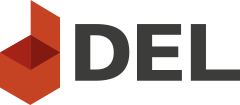Getting Creative with 3D Graphics: Evaluating Pedagogical Experiments During 18-months of Online Learning
This paper offers a qualitative and quantitative analysis of teaching strategies adopted during a highly unpredictable social context. It examines a wide array of exercises and techniques adopted and tested with students within a creative discipline and reflects on their relative strengths and limitations.
For over 18 months, educators in Hong Kong have been adapting to an unpredictable possibility space. In October 2019, online alternatives were required with little warning, requiring solutions that could be deployed without the curricular development typically enjoyed by Massive Open Online Courses (Pappano 2012) (Vardi 2012). As social unrest pivoted to COVID-19 restrictions, academics built on their remote learning strategies with more time to prepare, however, when pandemic conditions temporarily abated, the challenge became managing the shift from online to face-to-face instruction, and back online again as COVID-19 conditions fluctuated. This created a unique situation, where the unpredictable trajectory of each semester required flexibility and the willingness to experiment. For students, this 18-month period presented a durational challenge. In Hong Kong, working from home often means sharing a small space with a large family, and the novelty factor of online adaption can give way to fatigue and disengagement. Prior to the pandemic conditions, research into remote learning demonstrated that a significant proportion of students fail to move beyond ‘surface strategies’ and ‘surface motives’, put simply, a lack of engagement often leads students to do the minimum required in order to pass the course (Richardson and Newby 2006). To overcome the engagement challenge posed by online learning, Oliver and Rees (2003) demonstrated that the production of ‘authentic activities’ - those which tangibly connect with the physical lives of students beyond the screen show strong potential. Martin and Bolliger (2018) similarly demonstrated that collaborative activities such as ‘icebreaker’ exercises, combined with prolonged collaborative projects with real-world elements can generate meaningful learning and engagement when teaching remotely. This paper examines the strategies used within a computer graphics and art history course taught four times during a prolonged period of societal disruption in Hong Kong. On the surface, a computer graphics course using open source software can easily adapt to a work-from-home constraint, however, the implementation of collaborative authentic activities proved challenging, and resulted in a number of experimental solutions, each with varying degrees of success. Unlike other studies of remote learning, the period covered by this paper represents one where remote learning was adopted out of short-term necessity rather than long-term design, and the challenges faced by students changed as the duration and unpredictability of conditions placed pressure on their ability to maintain engagement. This paper combines a qualitative cost-benefit analysis of novel remote learning strategies with a quantitative analysis of how engagement changed over time. It analyses and critiques the rapid improvisation of a virtual guest speaker program, a virtual conference, a virtual 3D gallery, the use of shared online documents and databases for collaboration and troubleshooting, the use of remote access to overcome hardware constraints, and the use of YouTube analytics to track student engagement longitudinally. To benefit other educators working in creative fields, this presentation will examine the strengths and limitations of each of the above strategies, and speculate on how these learnings can improve the student experience in a post-pandemic tertiary education environment.
